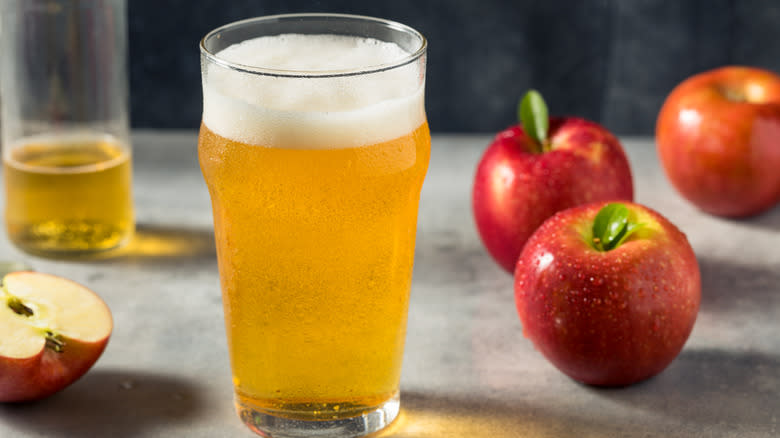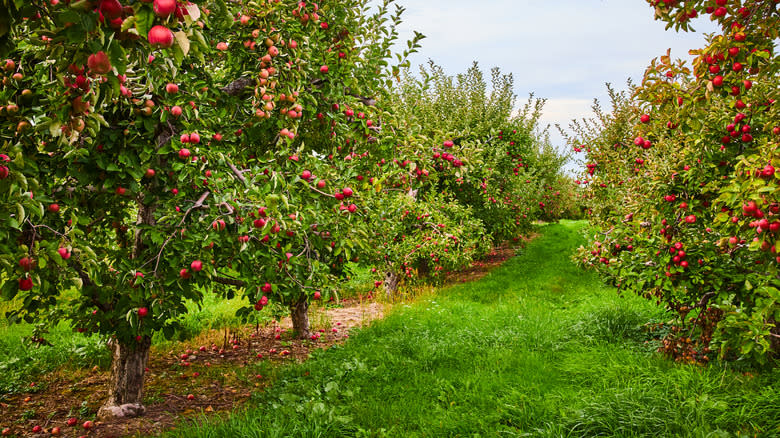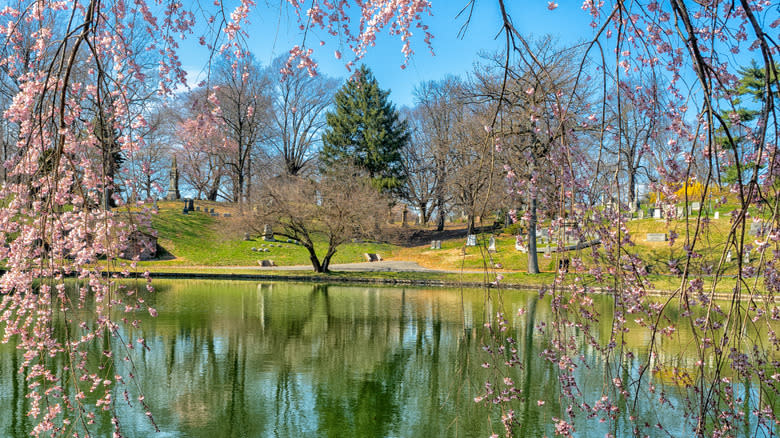The Connection Between Brooklyn's Cemetery Cider And The Inventor Of Morse Code

- Oops!Something went wrong.Please try again later.
A single, gnarled Baldwin apple tree stands sentinel over the grave of Samuel Morse in Brooklyn's Green-Wood cemetery. Although he will always be best known as the inventor of the telegraph (and co-inventor of Morse code, the subsequent dot-and-dash communication system named in his honor), an ongoing (and refreshing) part of Morse's legacy is made anew each year from this very apple tree: A fermented drink called Malus Immortalis, otherwise known as cemetery cider.
Morse, who liked to paint as well as invent, died in 1872. It's likely that he (along with thousands of fellow Americans) enjoyed a glass or two of apple cider every so often -- perhaps as a bit of boozy inspiration for his musings on harnessing electromagnetism as a means of communication. Throughout the history of the United States up to around the time of Morse's death in the late 19th century, "hard" apple cider (as opposed to non-fermented apple juice) was a widespread and popular beverage. The kind of sour apples that appear over Morse's grave each year were just the type used to make cider in the olden days, so that's what former winemaker Jeremy Hammond and his partner Joy Doumis decided to do when they discovered them around 2015.
Read more: 10 Of The Healthiest Beers You Can Drink
Spitter Apples And Why We Love Them

Hard cider was (and still is) beloved in England, so it's no surprise that colonists almost immediately began planting apple trees after landing in Massachusetts in the 1620s. Soon, apple cider became a drink of choice, watered down and served at all times of day (just like beer had been used in the Middle Ages to protect the populace from unsafe water and to maybe make the work day a little more tolerable). The trees the English settlers planted didn't produce the sweet-tasting apples we find in the grocery store; indeed, these kinds of tart fruit are often referred to by commercial growers as "spitters." Luckily, they're great for making fermented apple cider as well as apple cider vinegar.
The history of domestic apple cider is inextricably tied with another American hero: Johnny Appleseed, the mythical name given to one John Chapman, who assiduously planted apple orchards along the expanding Western frontier in the early part of the 19th century. As you might have guessed, Chapman didn't plant trees that bore big luscious fruits like Red Delicious apples; instead, he planted orchard after orchard of spitters. Just like their cider-making antecedents, Hammond and Doumis pick spitters in the fall (from the lone Green-Wood apple tree), give them a month or two in sealed containers to convert starch to sugar, grind 'em up, and make the cider, which is usually ready by the spring.
An American Tradition, Renewed

An unhappy combination of the effects of the Industrial Revolution and the Temperance Movement killed off most of America's apple cider production by the early 20th century. By the time alcoholic beverages were made legal again, unpasteurized cider had been replaced by beer, which was better suited for shipping. Still, it lingered in our cultural memory, recently coming back into popularity thanks to the craft beverage movement. After all, apple cider is locally sourced, seasonal, and gluten-free -- an artisanal no-brainer!
Then, Jeremy Hammond discovered Samuel Morse's grave covered in cider apples and got down to business. While it's true that Malus Immortalis is not commercially available, there's still a way to taste it: Hammond and Doumis have teamed up with Green-Wood Cemetery for a variety of events that feature both history and Malus Immortalis cider. If you attend one of those, you'll likely be able to do what the cider makers want you to do -- enjoy the fruits of their labor in the place it came from. If so, you will taste firsthand a reportedly crisp, tart, and bubbly drink -- much more wine-like than the sweeter commercial stuff. In fact, cemetery cider boasts a flavor Joy Doumis once described as "mezcal eucalyptus." Who knew that history could be so tasty, let alone make you feel all warm inside? Let's raise a glass to Samuel Morse, by way of Johnny Appleseed.
Read the original article on Daily Meal.

